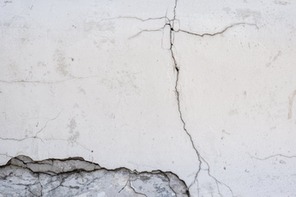- Local.Repair
- Blog
- How to Fix a Leaky Faucet: Step-by-Step Instructions
How to Fix a Leaky Faucet: Step-by-Step Instructions

Introduction: Addressing Common Household Plumbing Issues
Leaky faucets are a common household plumbing issue that can waste water and increase your utility bills if left unaddressed. Fortunately, fixing a leaky faucet is a manageable task that can be completed with a few basic tools and a little know-how. In this step-by-step guide, we will walk you through the process of fixing a leaky faucet, helping you save both water and money in the long ru
Step 1: Gather Necessary Tools and Materials
Before you begin fixing your leaky faucet, make sure you have all the necessary tools and materials on hand. You will likely need an adjustable wrench, screwdriver, pliers, replacement parts (such as washers or O-rings), and plumber's tape. It's also a good idea to have a bucket or towel handy to catch any excess water that may leak during the repair process.
Step 2: Shut Off the Water Supply
Before you start disassembling your faucet, it's important to shut off the water supply to prevent any leaks or flooding. Locate the shut-off valves under the sink or near the water meter and turn them clockwise to close them. Once the water supply is off, turn on the faucet to drain any remaining water in the pipes.
Step 3: Determine the Type of Faucet
There are several different types of faucets, including compression, ball, cartridge, and ceramic disk faucets. Each type may require slightly different repair techniques, so it's important to determine the type of faucet you have before proceeding. Look for any identifying marks or labels on the faucet or consult the manufacturer's instructions for guidance.
Step 4: Disassemble the Faucet
To access the internal components of the faucet, you will need to disassemble it carefully. Use your tools to remove any decorative covers, handles, and other parts of the faucet. Be sure to keep all the parts organized and in the order you removed them to make reassembly easier later on.
Step 5: Examine and Replace Faulty Parts
Once you have disassembled the faucet, examine the internal components for any signs of wear or damage. Common culprits for a leaky faucet include worn out washers, O-rings, or seals. If you notice any faulty parts, replace them with new ones that are compatible with your faucet. Apply plumber's tape on any threaded connections to prevent leaks.
Step 6: Reassemble the Faucet
Carefully reassemble the faucet, making sure all parts are in the correct order and securely fastened. Use your tools to tighten any screws or connections, but be careful not to overtighten, as this can cause damage to the faucet. Double-check that all parts are reinstalled properly before moving on to the next step.
Step 7: Turn on the Water Supply
Once you have reassembled the faucet, turn the water supply back on by opening the shut-off valves. Slowly turn on the faucet and check for any leaks or drips. If you notice any leaks, turn off the water supply and double-check your work to ensure all connections are secure.
Step 8: Test the Faucet for Leaks
After turning on the water supply, test the faucet by running both hot and cold water to check for leaks. Pay close attention to the base of the faucet, handles, and spout for any signs of water leakage. If you notice any leaks, go back and tighten connections or replace any faulty parts as needed.
Conclusion: Enjoy a Leak-Free Faucet and Peace of Mind
By following these step-by-step instructions, you can easily fix a leaky faucet and prevent wasted water and high utility bills. Regular maintenance of your faucets can help prolong their lifespan and keep your plumbing in good working order. With a little time and effort, you can enjoy a leak-free faucet and the peace of mind that comes with knowing your plumbing is in good shape.




